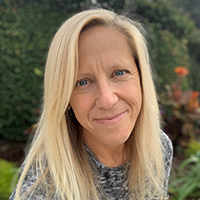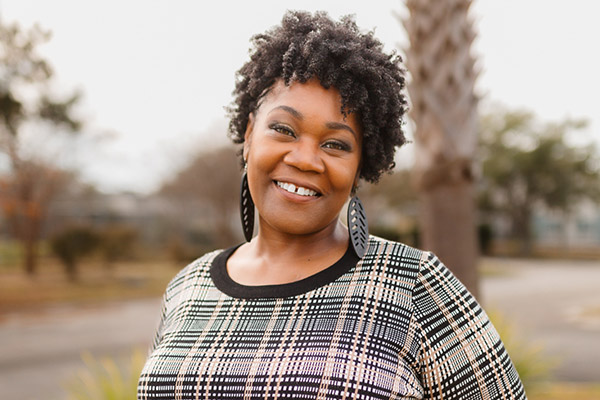10/19/2023

The shoulder is complex, meaning it gives us a lot of movement. But with more mobility, we get less stability. And there is a lot of mobility in this crazy joint complex of ours. In this episode of The Rebel MT, host Allison Denney dives in to dissect what’s going on in the shoulder and to explain why it reminds her of a caramel apple.

Rebel Massage Therapist: http://www.rebelmassage.com
AnatomySCAPES: www.anatomyscapes.com
Rebel Massage Therapist:
My name is Allison. And I am not your typical massage therapist. After 20 years of experience and thousands of clients, I have learned that massage therapy is SO MUCH more than a relaxing experience at a spa. I see soft tissue as more than merely a physical element but a deeply complex, neurologically driven part of who you are. I use this knowledge to work WITH you—not ON you—to create change that works. This is the basis of my approach. As a massage therapist, I have worked in almost every capacity, including massage clinics, physical therapy clinics, chiropractor offices, spas, private practice, and teaching. I have learned incredible techniques and strategies from each of my experiences. In my 20 years as a massage therapist, I have never stopped growing. I currently have a private practice based out of Long Beach, California, where I also teach continuing education classes and occasionally work on my kids. If they’re good.
website: www.rebelmassage.com
IG: instagram.com/rebelmassagetherapist
YouTube: youtube.com/c/RebelMassage
email: rebelmassagetherapist@gmail.com
AnatomySCAPES - created by & for hands-on professionals.
As hands-on health professionals, we want more than labeled charts of muscles, nerves, and bones. We crave anatomy education that informs our touch. AnatomySCAPES’ innovative online trainings are bringing vibrant, visual, real anatomy understanding to therapists with the Anatomy LOVERS eBox! Each month, you receive an image-packed, research-loaded mini-course including:
A downloadable and sharable Anatomy ART Card.
Research-loaded, 1-hour Course Webinar in the Anatomy LOUNGE with Nicole Trombley and Rachelle Clauson.
Anatomy ZINE course manual full of images, science and art to help you dig deeper.
Anatomy BRIEF Video that takes you into the dissection lab to see how anatomy LOOKS, FEELS, MOVES, and RELATES to its surroundings.
Really visual, really relevant, REAL anatomy education for hands-on professionals. Go to anatomyscapes.com/ABMP and become an Anatomy LOVERS eBox subscriber today!
website: www.anatomyscapes.com/ABMP
FB: facebook.com/AnatomySCAPES
IG: instagram.com/anatomyscapes
YouTube: youtube.com/@anatomyscapes
Email: info@anatomyscapes.com
0:00:00.0 Kristen Coverly: As hands-on health professionals, we crave anatomy education that informs our touch. AnatomySCAPES innovative online trainings teach you what real anatomy looks like, feels like and how it relates to its surrounding. Each course includes a vibrant research-based anatomy story, an anatomy video brief from the dissection lab, and an engaging webinar with AnatomySCAPES co-founders, Rachelle Clauson and Nicole Trombley. It's relevant, real anatomy education for hands-on health professionals and ABMP members save 20%. Go to anatomyscapes.com/abmp and start your journey today.
0:00:41.3 KC: This episode is brought to you by Rebel Massage Deep Tissue Body Butter, crafted because oil is too slick and lotion absorbs too fast. These organic, professional grade body work butters give you the grip you've been looking for. The best techniques in the world can get lost without the right product to support them. Try the get a grip version for a more specific, focused work or the total meltdown version for that group with a little extra grip. Made by a massage therapist for massage therapists. Head over to rebelmassage.com to get your grip today.
0:01:29.1 Allison Denney: Can we just talk about the shoulder for a moment? There is so much going on there. I guess like there is pretty much anywhere in our anatomy, but here is what I think about the shoulder. It's like a caramel apple, and while I might have caramel apples on my mind because it's currently September as I write this, they really are like someone who's taken a stick with a lump on the end of it and dipped it into a big gooey mass. Here is what I mean, the humerus reaches up and becomes large and round at its top like an apple on a stick. This rounded top is called the head of the humerus. It has a couple of notable bumps, like the greater tubercle and the lesser tubercle, and a couple of dents, like the groove running between those tubercles, aptly named the inter-tubercular groove. And all of these bumps and dents serve as attachment sites for muscles, which is not big news. What is fascinating though, is that the abundance of soft tissue tendoning out to find a bump or a groove to grab on to here is so much and so many that they begin to sort of morph into each other, kind of like caramel oozing over an apple.
0:02:33.4 AD: Let's couple this now with the idea that the ball at the end of that stick is supposed to move around pretty freely in a socket, also known in this case as the glenoid fossa. So like if the apple thickly coated with caramel was placed in a bowl, which is the whole general idea of a ball and socket. Ideally, you should be able to move that ball and stick around like a joystick from an OG Atari controller. But the only way you could manage this as if the caramel was still hot out of the oven and going enough to allow the apple to slide around in the bowl. Now let's pretend that the ball is attached to a table, like it is actually built into that table, and the legs of that table may not have solid connections to the table or to the floor for that matter. And the caramel has cooled down and dried up and someone comes along and tries to pick up that caramel apple because well, it looks delicious.
0:03:23.9 AD: What do you think would happen then? Clearly not good things. Maybe the stick dislodges from the apple, maybe the caramel cracks, maybe the table dislocates from one of the legs, or maybe the whole structure pulls away from the floor. If you are picturing a shoulder here instead of a ridiculous caramel apple scenario, you might be cringing a bit and for good reason. Let's dissect what is actually in the shoulder. Spoiler alert, it's not caramel.
0:03:56.0 AD: The shoulder in anatomy speak, is more accurately known as a shoulder complex. Why? Because it's sure ain't simple. But this is the beauty and concurrently the frustration about the shoulder. It is complex, which is the exact quality that allows us the freedom of mobility. You might be familiar with the notion that infrastructure has more stability, then it has less mobility, and vice versa, if a infrastructure has more mobility than it has less stability. Case and complicated point here, the shoulder in all of its complexities offers us a lot of mobility and therefore not so much stability. Keep this in mind as we peel away the layers and look at what's inside. There are actually four joints that make up this conglomerate. Who can name them? Oh yeah, I'm not in the car with you or on a walk with you while you're listening to this, so I'll just talk about them.
0:04:44.6 AD: Say them with me if you can. They are the glenohumeral joint, the acromioclavicular joint, the sternoclavicular joint and the scapulothoracic joint. The main joint most people think about when it comes to the shoulder is the glenohumeral joint. This is the ball and socket/joystick structure that comes to mind when we think about what the shoulder can do. This is the caramel apple in the ball. More technically speaking, this is the head of the humerus in the glenoid fossa. There are seven muscles crossing this joint and latching onto the head of the humerus, attempting to pull and tug at the arm so it can swing around, reach for things and maybe hug some people. Four of those muscles are grouped together and known as the rotator cuff, then the lats and its little helper the teres major sneak in from under the armpit, and the pec major muscles its way into the front like a bully at a playground.
0:05:32.9 AD: Looking closely at where these muscles live on the scapula or on the torso in relation to where they land on the head of the humerus gives us a lot of information about how they move the shoulder, but there's more than just muscle here. There are, as with most joining together of bones, a bunch of ligaments holding things in place. And consequently, in an attempt to prevent these ligaments and muscles from getting irritated with each other, there are also a couple of bursa. Underneath all of this lies a joint capsule, remember that a joint capsule, also known as an articular capsule because articulation doesn't just mean the ability to talk clearly, it also means the state of being joined has two layers, an outer layer and an inner layer.
0:06:14.3 AD: The outer layer is the fibrous one because it's made of fibers that are continuous with the fibers of the periosteum or the connective tissue that covers the bone, and the inner layer is the synovial one, because it holds in the synovial fluid, characteristic of freely moving joints. There is more to a joint capsule of course, because there always is with anatomy, and there are other elements inside like the labrum, which is for the shoulder what the meniscus is for the knee. But this is just emphasizing my point that there are a lot of issues trying to allow for a lot of movement while simultaneously trying to keep it all together.
0:06:49.3 AD: But the movement doesn't just stop at the glenohumeral joint, if it did, we would only be able to lift our arms up to about 90 degrees of abduction. Take a moment and reach up above your head with one arm and use your opposite hand to fill your scapula, pop away from your rib cage, unless you're driving right now, then don't do this, wait till you at home. This is called upward rotation of the scapula. This happens at the scapulothoracic joint, or where the scapula articulates with the rib cage or in the caramel apple analogy, this is where the whole table starts to move. The scapulothoracic joint is the slipping and sliding of the scapula around the ribs. It's a very unusual joint when it comes to anatomy because, well, it's just a weird joint. There's no capsule or articular cartilage or ligaments trying to hold it in place, just a lot of muscles and tendons playing tug of war and trying to win.
0:07:41.3 AD: This would be like if the table where the caramel apple sits had a dog crate under it with cloth napkins glued to the edges and on the under side of the table and to the top of the dog crate. Like I said, it's a weird structure. The last two joints in the shoulder complex are exemplified by the table leg in our story. And while there might be four legs on your average table, there is only one here, the clavicle. The bones of the shoulder and the arm connect to the trunk through this bone where one might also find a collar. It joins with the scapula at the acromion process, creating the acromioclavicular joint, and it grabs onto the torso at the sternum forming the sternoclavicular joint.
0:08:20.8 AD: These two joints are simpler and sturdier, but they do have some wiggle room. So if we wanna dangle from a tree branch, our scapula slides into upward rotation, and our acromioclavicular and our sternoclavicular joints shift so that the clavicle can tilt and we can hang out with our arms by your ears. Just know this, the ability of the scapula to slide around is a huge part of why we have so many shoulder issues. For the most part, we move around using our legs and our shoulders are reserved for lifting and carrying and cooking and hugging. But if we lift something heavy or hold something between our shoulders and our ears or decided to revisit our youth and hang from a jungle gym or really get crazy and walk around on our hands, we have complexity to help that happen. The problem is this, these four joints are allowing us all of this movement, but the tissues that surround them are working like heck to make sure they don't dislocate, disconnect or break. There are a whole heap of muscles chiming in here that I haven't mentioned yet, and I'm going to breeze over a few of them now, but only breezily.
0:09:22.8 AD: The deltoids covering the acromioclavicular and the glenohumeral joints have a lot of actions, but really help hold that apple in that bowl, especially when picking up those heavy items. The biceps and the triceps, which cross over the glenohumeral joint but strangely both have attachment points on the glenoid fossa, which would be like if the quads and the hamstrings and the leg had grips at the acetabulum at the hip and the coracobrachialis sneaking underneath the biceps and helping the anterior fibers of the deltoid to flex the shoulder, because we flex the shoulder way more than we extend it. PS and by the way, if I were to list and comment on all the muscles that then manipulate the scapula and the clavicle and the sternum, we would be here all day.
0:10:07.3 AD: Suffice it to say, the shoulder complex is indeed convoluted. The whole idea that we have all this mobility is the exact thing that makes all of these muscles and tendons work so hard at giving it stability. Then, and you know this downward spiral well, when muscles are overworked, the fascia around it binds. And when the fascia clamps down, the muscles lose mobility. And when these two things aren't managed well, the slippery slope of nerve and blood vessel impingement tumbling its way towards frozen shoulder, thoracic outlet syndrome or just plain weird pain is all but inevitable. What can we do to help?
0:10:44.7 AD: I'm so glad you asked. Let me start by congratulating you for listening this far.
0:10:49.4 AD: Because the more you understand your anatomy, the more you are able to address each client's variables and do work that is specific to them. This is huge, because when a client comes into your office and declares weird shoulder pain, you can start asking a slew of questions that will point you in the right direction. Which joint is affected? How long ago did it happen? What feels restricted? What feels weak? And all the while, you are empowered with being able to translate what they are saying into what you know is underneath their skin, a well-worn stick, a slightly bruised apple and some very tired caramel. And here we are, the end of the episode, thank you to the extraordinary crew over at ABMP for helping me get my words into your ears. And if you wanna get any of your words into my ears or more accurately into my brain via my eye balls from a computer screen, drop me a line at rebelmt@abmp.com, that's R-E-B-E-L M-T at abmp.com.
0:11:52.2 AD: I always wanna hear your questions, comments, suggestions or salutation. Also, if you're interested in checking out anything else I'm doing, head over to rebelmassage.com where you will find all sorts of fun things to click on, like homemade organic products for your practice, cool links to continuing education classes, thoughts I have typed up and posted here and there, and other Rebel Massage dabbling.
0:12:19.3 KC: Members are loving ABMP Five-Minute Muscles and ABMP Pocket Pathology, two quick reference web apps included with ABMP membership. ABMP Five-Minute Muscles delivers muscle-specific palpation and technique videos plus origins, insertions and actions for the 83 muscles most commonly addressed by body workers. ABMP Pocket Pathology created in conjunction with Ruth Werner puts key information for nearly 200 common pathologies at your fingertips and provides the knowledge you need to help you make informed treatment decisions. Start learning today. ABMP members log in at abmp.com and look for the links in the featured benefits section of your Member home page. Not a member, learn about these exciting member benefits at abmp.com/more.





